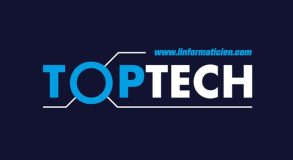The pharmaceutical industry consists of several activities: testing, research, production and marketing of medicines and vaccines for humans and veterinary use. These activities are carried out by pharmaceutical laboratories, research institutes and medical biotechnology companies, all seeking to improve health through progress and innovation.
This huge market, with its myriad players, is one of the world’s most profitable. In 2022, its global revenues were nearly US$1.5 trillion1 and by 2027, they are likely to surpass $2 trillion a year2. The environment in which this industry operates is at once complex, highly competitive, scientifically and technologically innovative and also highly regulated, and this gives rise to numerous challenges for the major pharmaceutical companies, particularly as regards public trust and intellectual property.
These players have been investing in digital technologies for some years now in order to broadcast their product ranges and advances more widely to their huge ecosystems. Some “Big Pharma” players such as Abbott Laboratories, Pfizer, Johnson & Johnson, Sanofi and Stada have even gone one step further and communicate through a powerful strategic tool: their own customised TLD. Based on a few inspiring uses that they make of their “dot brand” TLDs, in this article we take an in-depth look at some of the advantages that a brand TLD can offer players, among all the challenges posed by this sector.
Upholding a strategy of product launch and unification under a branded denominator
Launching a drug in the pharmaceutical sector involves long, complex processes requiring rigorous planning and execution. From the initial product concept, pharmaceutical brands follow a number of key steps – research, evaluation and development. They have to file a patent as soon as the formula is identified, to safeguard their right of ownership (and sole exploitation) for 20 years. After this the product falls into the public domain, opening the way to competition from “generic” medicines, and which may signify a fall in revenues for the laboratory that originally held the patent. On average, before a new drug comes to market, one has to assume just over ten years of R&D3 followed by three of administrative procedures4. So time to market is very long, which leaves only a limited window in which to make profits before the patent expires. The pharmaceutical laboratory must therefore quickly devise a precise plan for communicating to the medical profession while complying with the numerous regulations in force.
Having one’s own brand TLD is a good way to support a targeted and effective product launch communication campaign. For example, a mini-website with a name in the format product.brand or productrange.brand may be a good way to present the product or range in question to medical representatives who then build relationships with healthcare professionals. The product is immediately associated with the brand, which is systematically given value by its TLD. This brand-based strategy also conveys clear property rights from the URL itself and allows the products and services developed by the laboratory to be gradually and transparently consolidated under a strong brand. This is precisely the strategy used by US giant Abbott Laboratories, a pioneer in the use of the dot brand, which has deployed a whole digital ecosystem branded .abbott. The abott TLD currently houses nearly 200 domain names, grouping many of its products and services: molecular.abbott, glucerna.abbott, diagnostics.abbott, and nutrition.abbott.
Showcasing innovative capabilities by making R&D work more transparent
The pharmaceutical sector is not only one of the most profitable, it is also one of the most innovative. The money and effort that goes into research is greater than in any other sector. In 2022, pharmaceutical companies spent nearly $181 billion on R&D worldwide5. More specifically, the estimated average cost of developing a new drug is $2.3 billion6 and rising, according to Deloitte. To increase the value of their R&D pipeline, some pharmaceutical groups forge partnerships with or even acquire smaller companies with high innovative potential, aim at new fields of treatment, set up in new countries, etc. – all actions that can benefit from wider visibility to their trading partners.
The use of a brand TLD to showcase these various practices is entirely pertinent. A customised TLD allows them to develop specific digital spaces through uniform, authentic, modern naming, strengthening credibility of the brand online. For example, German pharmaceutical group Stada has deployed the parkinson.stada and diabetes.stada mini-websites dedicated to these two pathologies. Another example is biosimilars.stada, an information space entirely given over to biosimilar medicines.
Of course, a dot brand does not in itself confer any particular expertise on its holder, especially in this highly regulated sector. However, when used widely and wisely, it does allow the owner to boost the visibility of its contents and give them a certain authority they would not otherwise have. The three .stada uses referred to above lend authority to the group’s declarations on these key subjects and give greater visibility to the research work that it undertakes and presents online.
Guaranteeing the authenticity of online resources and communications
Authenticity of information is an overriding concern in this industry, which is particularly affected by misinformation, disinformation, and fake products. Fake websites and wrong information can indeed even endanger lives. It is appropriate to recall, at the same time, that health data are classified as sensitive. Being able to make official content available in trusted and secure digital spaces is therefore fundamental for companies in this industry and more broadly for healthcare as a whole. A recent study conducted by the DNS, the Health Ministry’s digital health unit, on perceptions of digital health, revealed that 78% of French people suspect their data are pirated7, while the latest barometer published by ACSEL, the digital economy association, indicates that the French have only moderate trust in e-health8.
Acting as an indicator of authority, a customised TLD is a means of authenticating online resources. It allows its owner to fight more effectively against cybersquatting, typosquatting and phishing by automatically discrediting fake sites that do not end with its brand TLD after the dot. The registered brand of its TLD is then in a position to develop a safer digital territory for its audiences: partnerships.brand, press.brand, commitments.brand, innovation.brand, etc.
As the next round of applications for dot brand TLDs approaches (2026), it will be interesting to see how the major players of the pharmaceutical industry and of health technology or “MedTech” position themselves as regards the possible adoption of a customised TLD as a way of responding to this issue of public trust.
[1] https://fr.statista.com/themes/3554/le-marche-pharmaceutique-mondial/#topicOverview
[2] https://www.iqvia.com/fr-fr/locations/france/newsroom/2023/01/consommation-de-medicaments
[4] https://www.leem.org/recherche-et-developpement
[7] https://esante.gouv.fr/espace-presse/le-numerique-en-sante-ce-quen-pensent-les-francais



